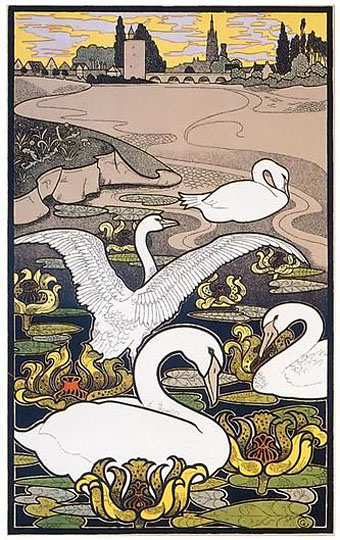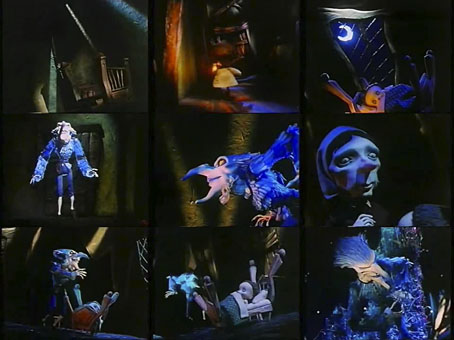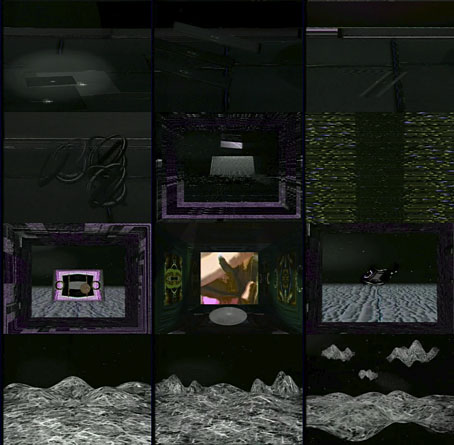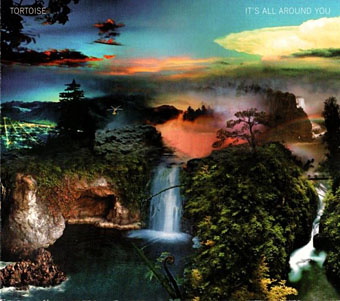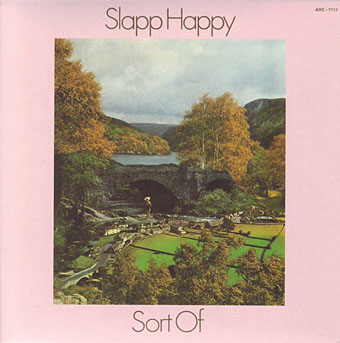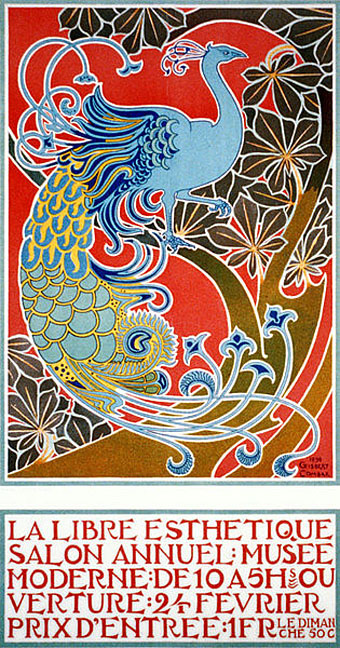Nothing to do with Neil Gaiman’s Goth dream-master, and not a film for children despite appearances, Paul Berry’s short animation, The Sandman (1991), is based on Der Sandmann by ETA Hoffmann. The less said about its content, the better; watch it to the end. Paul Berry later worked as a puppet animator on feature films including The Nightmare Before Christmas. I didn’t know—and was dismayed to discover—that he died in 2001 at the age of 40.
The Legend of Sleepy Hollow
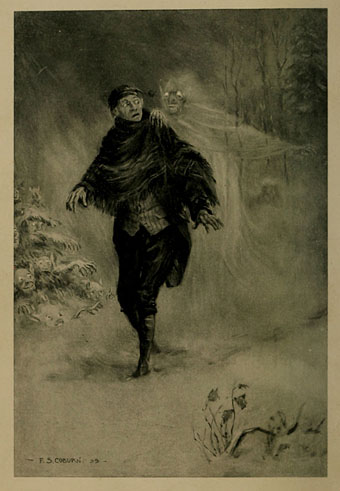
Washington Irving’s ghost story is illustrated by Frederick Simpson Coburn for an 1899 edition, with page decorations by celebrated book designer Margaret Armstrong. Coburn’s gloomy plates don’t look so good in this scanned copy but he also produced the many spot illustrations that run through the book. See the rest of the pages here.
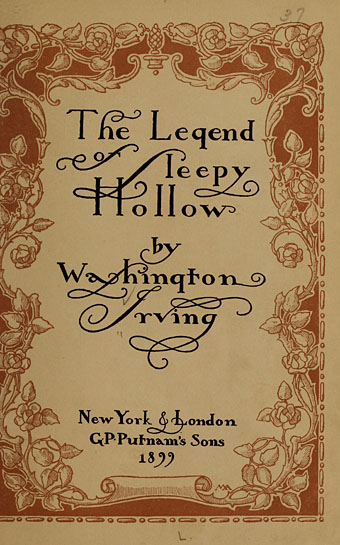
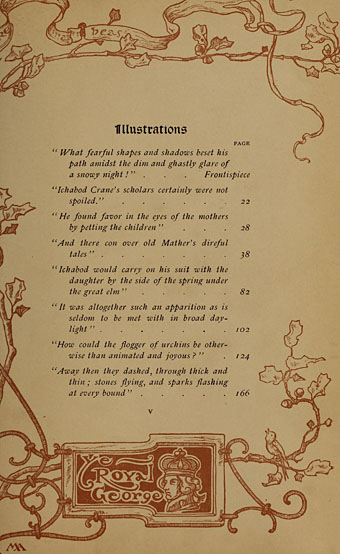
Text Videovoid by David Larcher
Yesterday’s post concerned an atypical piece of art by David Larcher. Text Videovoid (1993) (aka Videovoid Text, etc) is a good example of Larcher’s more usual work in film and video which is non-narrative yet remains eminently watchable, something you can’t always say about the outer limits of video production. The UK’s Channel 4 broadcast a large chunk of Larcher cut-ups one evening in the 1980s, something they’d never do today; I used to have that broadcast on tape, and enjoyed watching it with the sound off and music playing. Text Videovoid (1993) is a lot stranger:
The viewer is navigated through dark electronically constructed seascapes, conjuring a lighthouse beam and the Blue Peter code flag (“all on board – this ship is leaving port”) to lead us into a heaving ocean of alphabetic patterns where dolphins formed from letters leap from the waves. Larcher’s eloquent stream of consciousness monologue proceeds from a reflexive incantation of video terminology into a philosophical discourse on the state of non-being at the heart of the void itself.
Larcher’s video is also described as a work-in-progress which may explain why different times (and titles) are listed. The copy linked here runs for 30 minutes.
Collagescapes
Oliver Wasow‘s artwork for It’s All Around You (2004), an album by US group Tortoise, contains some fine examples of disjunctive (Surrealist, if you must) collage landscapes. This is a sub-genre of collage that I’ve always enjoyed, especially when it’s carefully done, and I was wondering recently whether Wasow had done anything similar for other groups. Discogs has a few more examples, one of which looks like something from the masters of the photo-collage cover, Hipgnosis.
But searching was curtailed when I remembered a much earlier example of the disjunctive collagescape on the cover of Sort Of (1972) by Slapp Happy. I’d forgotten all about this superb piece by avant-garde filmmaker David Larcher which really needs to be seen on a 12-inch sleeve; this is one of those collages where the combination of careful composition, equalised light and shade, and concealed edges makes the picture seem at first glance like an ordinary photograph. Whether Larcher has produced more work of this quality, I can’t say. Another of his collages can be found at The Quietus where Cyclobe enthuse about his films. For more elaborate collagescapes you have to look elsewhere, to one of the prime exponents of the technique, Tsunehisa Kimura.
Elsewhere on { feuilleton }
• The album covers archive
The art of Gisbert Combaz, 1869–1941
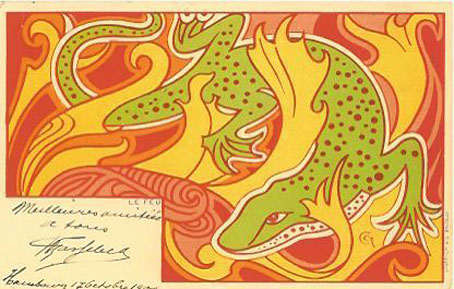
More from this Belgian artist whose splendid Art Nouveau peacock is a regular feature in books about fin de siècle art and design. La Libre Esthetique was a salon for which Combaz produced a number of posters, a few more of which may be seen below. The salamander postcard seems to be part of another set devoted to the four elements; Combaz may have produced further series as there’s also a volcano card depicting fire. All of this work dates from the 1890s. A few years later Combaz’s art took a darker turn with a series of propaganda pieces reacting to events during the First World War.
